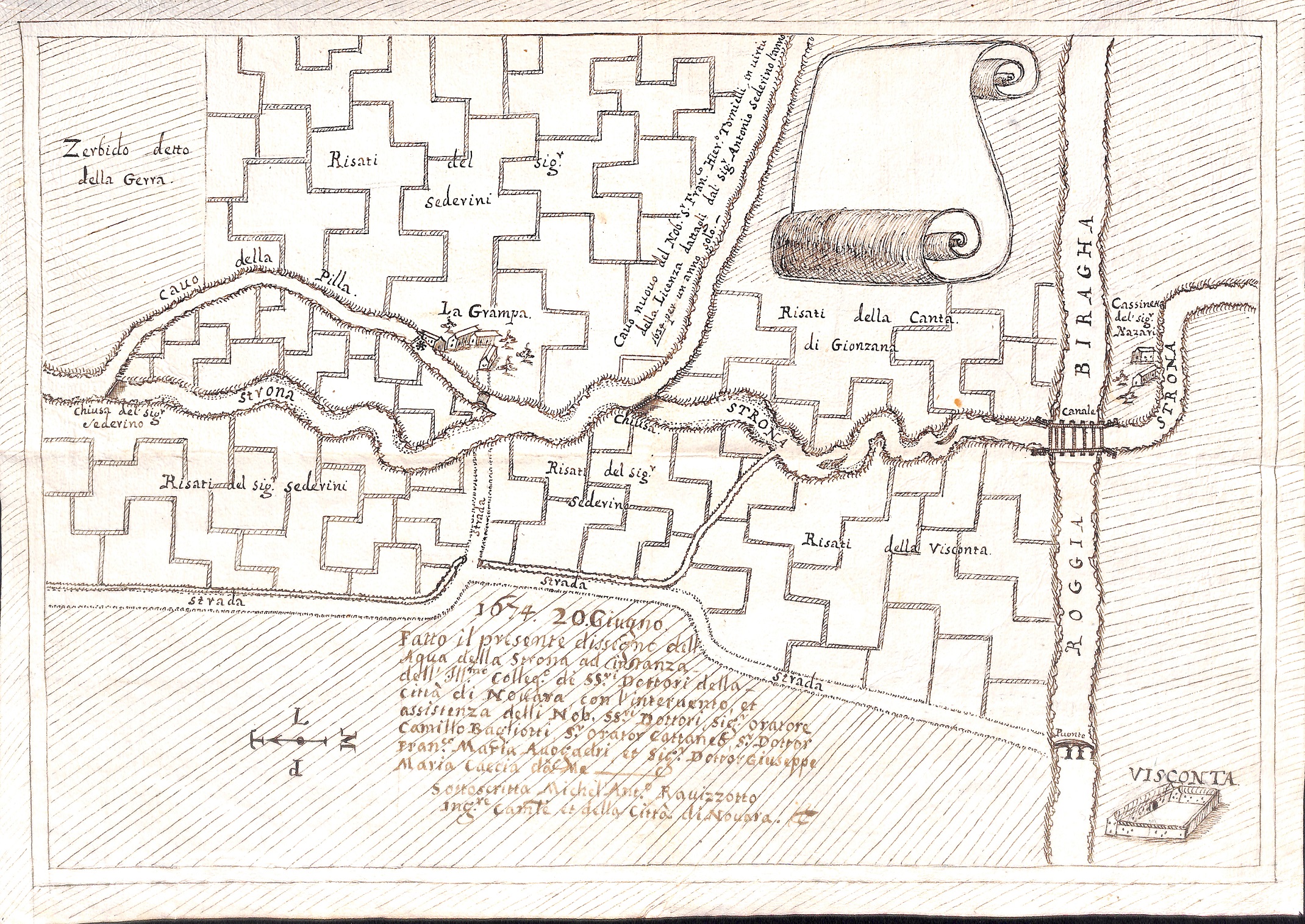The State Archive of Novara preserves records originating from local government offices, public entity records offices, and private collections and archives. The oldest public archives include those of the judiciaries of the Ancien Régime suppressed during the 18th century, as in the case of the Counties of Novara and Vigevano, or which did not survive the Napoleonic era, as in the case of the Intendenza per l'alto e basso Novarese e Vigevanasco (Intendency for Upper and Lower Novara and Vigevano). Of particular significance are the archives of the Napoleonic prefecture of the Department of Agogna, reorganised by Luca Peroni in the early 19th century, and the General intendency of the division of Novara, whose functions were taken over in 1861 by the Prefecture. The archives of the Cabinet Office, General Affairs and Special Affairs of the Municipalities and Charitable Works - documents of key importance in the history of Novara between Unification and the republican age - are preserved.
The State Archive also preserves the archives of public offices with strictly administrative and fiscal competences; in particular, it preserves the series of the ecclesiastical and religious assets of the Intendency of finance, with records dating from the 19th century to 1941.
Of notable importance is the documentation produced by the Notaries of Novara, consisting of around 13,000 folders and volumes, containing minute books dating from the 15th to the 20th century. Meanwhile the establishment in Novara of the Uffici di insinuazione, renamed the Public Records Office in 1862, dates to 1770. Also, part of the Archive are the deeds and transcriptions of the Land Registry from the 19th century to 1957, among the most widely researched archives for administrative purposes, and the series of successions from the Public Records Office and the Revenue Agencies of Novara, Borgomanero, Oleggio and Romagnano Sesia.
There is also a substantial archive of maps; as well as the Theresian maps of the city, of Novara and of the communities of the county, the most significant body comes from the District Offices of Direct Taxation of Novara and Borgomanero, which illustrate the land registry situation in 1936. Together with the deposits of the Ufficio Tecnico Erariale (Land Registry Office) and the Municipality of Novara, the Archive has received land registers, some of which dating to the pre-Unification era, while through the projects and drawings of the Genio Civile (Civil Engineering Authorities) it is possible to retrace work carried out on buildings and public infrastructure in the province between 1861 and 1986.
The judicial authorities have deposited records relating to the Giudicature (Judicatures) and Preture (Magistrate’s Courts). There is a substantial series of criminal proceedings from the Court of Novara, deposited at different times, which, together with the records of the Public Prosecutor’s Office, provide an overview of the administration of justice in the area between the 18th and 20th centuries. Also of great significance is the archive of the Court of Assize of Vercelli, later of Novara, which judged the most serious crimes, and of the Extraordinary Court of Assize, later suppressed and transformed into the Special section of the ordinary Court of Assize, set up between 1945 and 1947 to judge crimes of collaboration with the Fascists.
The Military Districts of Turin and Vercelli deposited the conscription records and rolls and service record books of enlisted personnel from the provinces of Novara and Verbano-Cusio-Ossola. The series of records, which includes 1614 registers and files dating from 1792 to 1940, are consulted primarily by people carrying out genealogical research.
The Police Headquarters of Novara also deposited the records of the A/8 category, known as the "Sovversivi” (‘Subversives’), which include files on people regarded as a threat to national safety and refer in particular to the Fascist era and early Republican era.
The State Archive of Novara also preserves numerous archives deposited by other public institutions. These include the historic archive of the Municipality of Novara, which suffered serious losses and damage. Fine pieces associated with the history of Novara were concentrated in the Manuscripts of the Public Library archive, which preserves documents from the collections of distinguished Novara scholars, such as Carlo Negroni, and the oldest and most important collections of scrolls, the most ancient of which dating to 882.
The historic Archive of the Province of Novara includes 2054 folders with documents from the second half of the 19th century relating to the different functions performed by the authority in the healthcare, infrastructure, education and welfare spheres.
The oldest and largest archives deposited in this Institution include that of University Hospital Maggiore della Carità which includes, for the catalogued part, 5726 units made up of folders, volumes, registers and scrolls; this includes documentation relating to the Ospizio degli esposti orphanage which housed and educated abandoned children. Other welfare-related documentation comes from the archives of the Provincial psychiatric hospital and the Dominioni Orphanage.
Also preserved is the archive of the Collegio Caccia university college of Novara, an institution established for children of Novara’s nobility and descendants of founder Giovanni Francesco Caccia, Novarese jurist, decurione of the Municipality of Novara and speaker at the senate of Milan, and the archive of Teatro Coccia, whose series document the opera activities between the 18th and 20th centuries.
Of particular interest for the history of the local area are the documents from various archives of noble families, including those of the Brusati, Caccia di Romentino, Cacciapiatti, Tornielli di Borgolavezzaro and di Vergano families, of which large collections of scrolls are preserved. The State Archive of Novara also preserves the archive of Novara publicist Aldo Beldì, whose studio worked for important Italian industrial groups in the second half of the 20th century. It is made up of a wide array of documents, for the most part sketches, drawings and prints.




